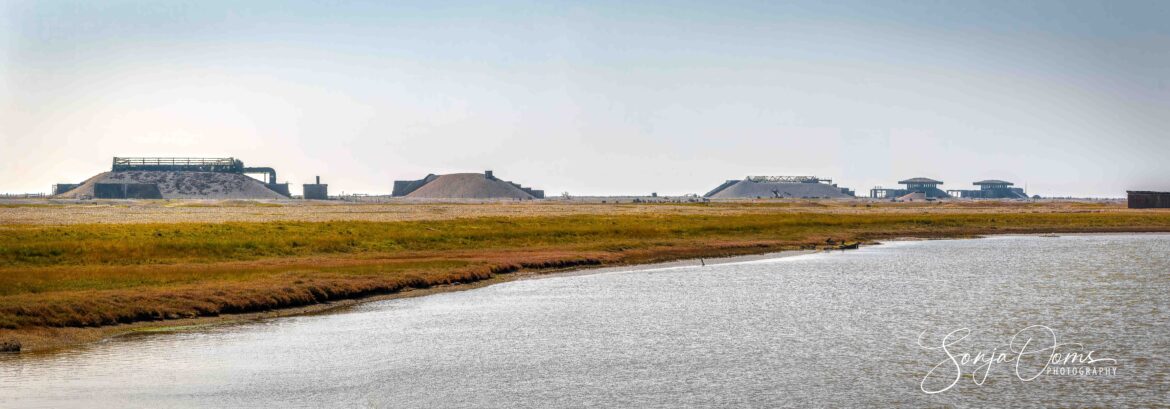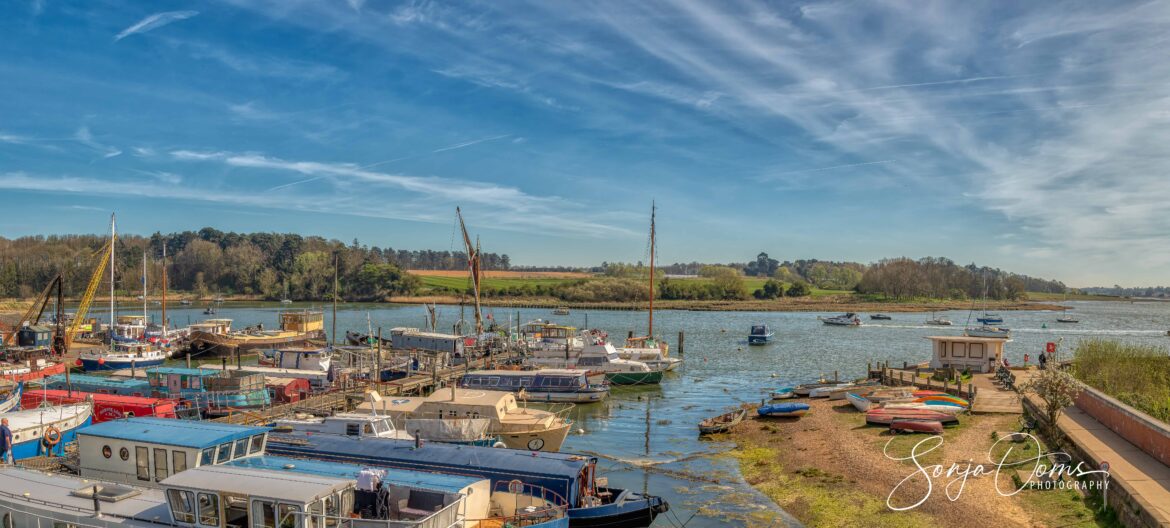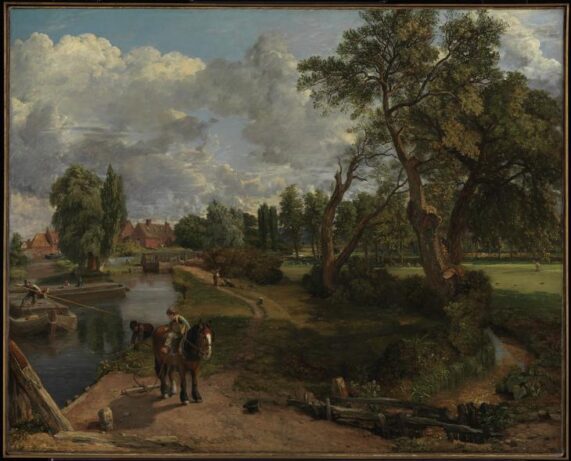Ever wondered who the Easter Bunny actually is? Well for starters, he is not even a rabbit but a hare, ancient symbol of fertility and life.
The origins of the bunny date back to a German pagan festival which celebrated Eostre, a great Saxon goddess whose symbol was a hare. Way before anyone even heard of the birth of Christianity. Eostre…Easter…ring a bell anyone? Eostre was cleverly incorporated, first into the Roman calendar and then into Christian doctrine. You try to pull this off now and you’ll get sued for copyright violation faster than you can say “cheap Chinese copy”
Pagan or not, I couldn’t care less, but when we visited the National Trust Orford Ness natural reserve we saw quite a few hares. Not shy at all.

Some of the buildings on Orford Ness. In the background the famous “Pagodas” Between 1953 and 1966 the six large test cells and most of the other buildings on the shingle around them were built to carry out environmental tests on the atomic bomb. These tests were designed to “mimic the rigors to which a weapon might be subjected before detonation” and included vibration, extremes of temperature, shocks and G forces.
The pretty village of Orford is worth a visit, though it can be quite busy. Plan your visit well and you can enjoy one of the most interesting coastal sites in Suffolk: Orford Ness. A nature reserve owned by the National Trust, is a shingle spit separated from the mainland by the River Alde. Once this was a UK top-secret military testing ground. The site is both beautiful and somewhat mysterious in equal measure. The military conducted covert experiments here into aerial combat tactics, and the testing of airborne bombs from 1916 onwards. In the mid-1950s, the Ness became a base for the Atomic Weapons Research Establishment, testing the trigger mechanism of the atomic bomb.
Afraid of nuclear radiation are you? The Orford Easter Bunnies looked big, fat & very healthy.
The reserve can only be accessed on certain days by the small National Trust ferry from Orford Quay – check the opening times and book your journey HERE.

River Deben in Woodbridge
Woodbridge Town Council building (AD 1575) and one of the local pubs
We regularly drive up to Suffolk as two dear friends back from our bad old days in Islamabad have retired in sleepy Woodbridge. I think Sonja and I will retire in England also. Especially now that I heard that Tsar Putin, The Ancient Man, The Primordial Man, The Ultimate Alpha Male who wrestles with three Kamchatka bears every morning before breakfast, had put Belgium on a list of ‘unfriendly countries’. I thought: well, I agree with Transnational Special Operations Vlad. Belgians can be quite unfriendly! Especially that bus driver in Antwerp who drove away on purpose when I approached the busstop. And that awful person at the cash register of the Aldi in Hasselt (who never says a word). All in all however, Belgium is a nice country, at least if you don’t pay attention to the weather, politics, the Flemish rappers on the radio, the gigantic taxes, the high social contributions, the insane traffic infrastructure, the non-existent urban planning and if you don’t wear a burka if you’re a woman and want to walk Daisy the Cockapoo in most parts of Brussels without being spat on. And if you’re ill, a real doctor will actually see and examine you … the same day … in his surgery … in person. I kid you not my dear Anglo-Celtic Isles friends.
The Suffolk coast is of course one of the big draws for people visiting Suffolk, popular destinations are Felixstowe and Lowestoft, or the more quaint seaside towns like Aldeburgh and Southwold. Perhaps these destinations, if you don’t fancy mingling with hordes of people, could provide a great day out, all in perfect peace and quiet.
No your computer screen is not going haywire, the next few images are actually of the famous “crooked” houses of Lavenham
Most of Suffolk is an area of gently undulating fields and sleepy towns. But first price for “The Sleepiest Suffolk Town” must go to Lavenham, in the heart of rural Suffolk. Considered one of England’s most perfect medieval villages (don’t tell the folks from the Cotswolds). This medieval wool town grew so fast, they used green wood to build the typical half-timbered houses. And as the wood dried, the twisting began. The town went bust almost as fast as it was built, so no one had the money to tear down and rebuild… lucky for us they just left it like it was. And so it sits today. Exactly the quirky, unusual, unique places we’re always looking for.
Stroll around town and let yourself be surprised by the many “crooked” houses. Don’t miss the spectacular timber framed Guild Hall (National Trust)
St Mary’s Church Kersey and River House (AD 1490) overlooking the ford
And if you have still time, make a short stop in Kersey. The view across the cobbled ford, up the main street lined with thatched and timber-framed cottages, to the medieval church that overlooks the village, a picture-postcard village.
This is my second blog-post on Suffolk. The first one can be found HERE.
Thank you so much, Alex, for suggesting these visits to us. Next trip to Suffolk you’ll have to show us around “Constable country”.

